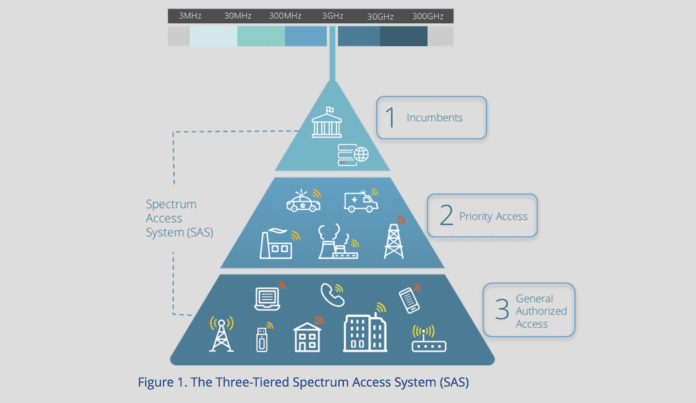Shared access to the 3.5 GHz Citizens Broadcast Radio Service (CBRS) band is getting a lot of attention lately with Nokia asking the Federal Communications Commission for permission to demo CBRS small cells in Philadelphia for Comcast, and, now Verizon asking the FCC to OK a year-long test of CBRS small cells in Irving, Texas.
According to a filing with the FCC, Verizon wants to get started on Sept. 1, and plans to test four broad aspects of deploying LTE in the CBRS band:
- radio propagation in indoor and outdoor environments;
- end-to-end architecture
- “Evaluation of coexistence mechanisms with shared spectrum (GAA) and PAL spectrum;”
- And “overall evaluation so TDD-LTE using 3.5 GHz.”
The FCC has been working for several years on freeing up access to spectrum in the 3.5 GHz for shared use. That work initially focused on up to 100 megahertz of spectrum, before being increased to 150 megahertz.The 3.5 GHz band is now in the hands of the Department of Defense for use in certain radar installations, as well as by non-federal fixed satellite service earth stations for receive-only, space-to-earth operations and feeder links. The FCC’s goal was to find a way for shared access to the spectrum without causing interference with existing users. A spectrum access system (SAS) would protect incumbent users from interference by recipients of priority access licenses (PALs) and general access licenses (GAAs).
According to the Verizon document, “The testing will benefit the public interest by enabling the pre-commercial testing of new products outside of a lab environment but in a controlled and managed manner. In addition to the product development testing described above, Verizon and partner companies intend to conduct separate and independent lab testing in a real-world environment at a Verizon facility or at a vendor’s facility.” As planned, the trial will involve up to 60 small cells, as well as base stations and prototype user devices. Verizon says it will use “equipment from multiple equipment manufacturers.”

